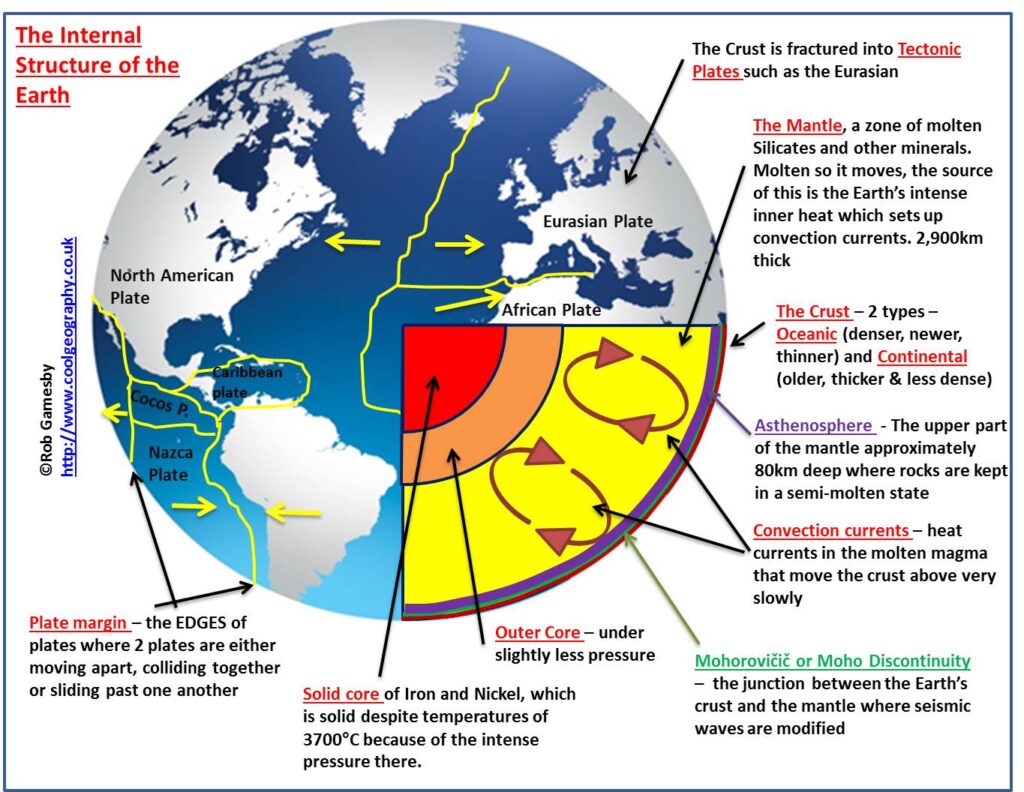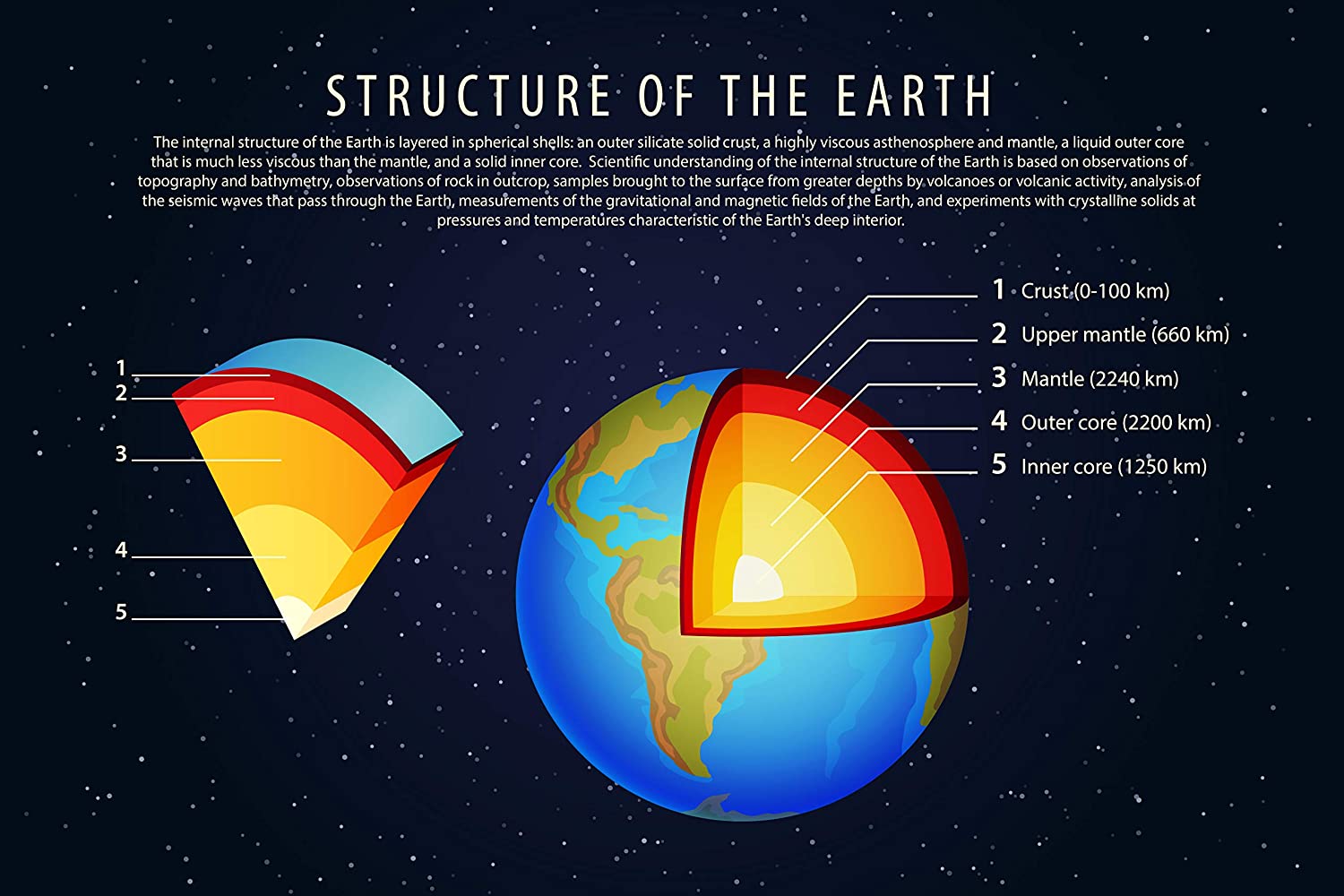the interior of our planet, with its extreme pressure and temperature conditions, is still a mysterious place. It is where minerals are created and metamorphosed through processes that span millions of years. the immense plates that form Earth’s crust float on the surface of a mass of partially liquid rock. As these plates collide with each other, they build mountains and open up oceans.
Plate tectonics
Although it seems to be immobile, the land on which we live moves several centimeters each year. India and Asia, for example, are moving toward each other by 4 to 6 cm every year.
this phenomenon, called plate tectonics , results from the fact that the lithosphere , the outer layer of Earth, is fragmented into a dozen huge plates, the tectonic plates, about 100 km thick, that slide over the surface of Earth’s mantle. Plate tectonics is responsible for most of the components of Earth’s surface, including oceans , created when two plates move apart (divergent plates), and mountain ranges (convergent plates) that come into existence when two plates collide. Sometimes, two plates simply slip against each other along what is called a transform fault . Although the movement of lithospheric plates is slow and continuous, it is nonetheless the cause of the most violent and devastating phenomena on the planet: volcanic eruptions and earthquakes.
The structure of the earth is divided into four major components: the crust, the mantle, the outer core, and the inner core. Each layer has a unique chemical composition, physical state, and can impact life on Earth’s surface.


